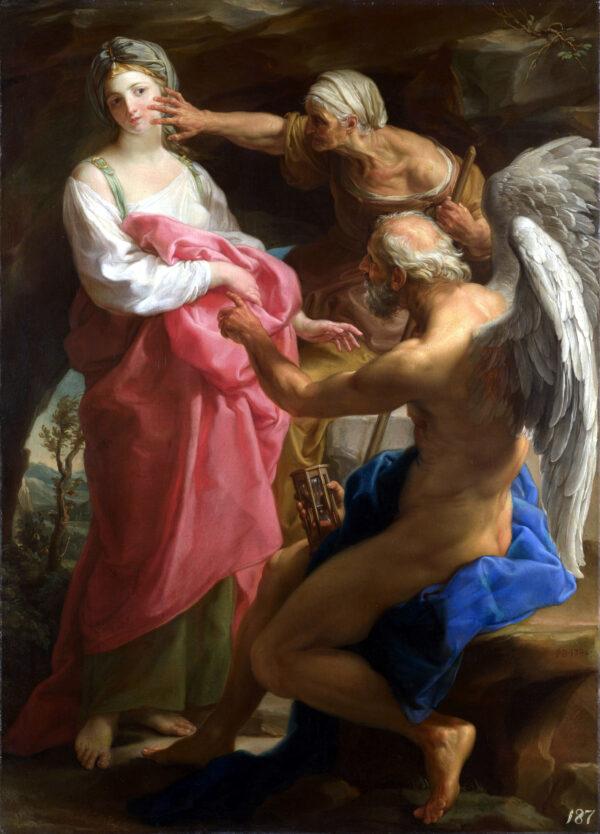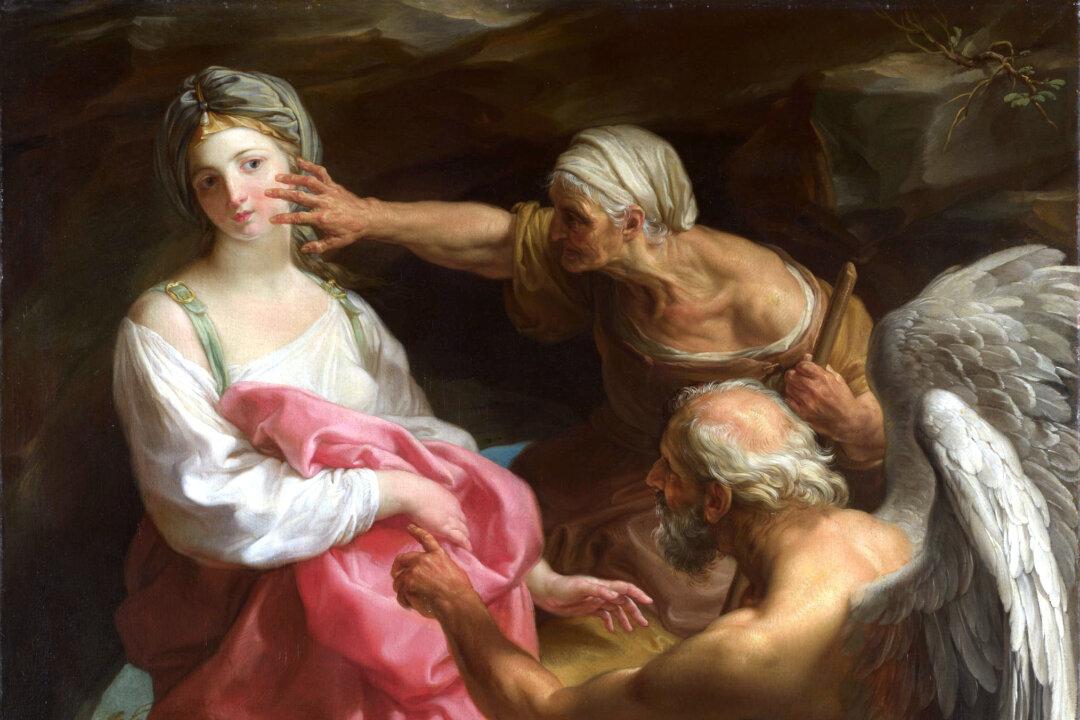
“Time Orders Old Age to Destroy Beauty,” circa 1746, by Pompeo Batoni. Oil on canvas, 52.3 inches by 37.9 inches. The National Gallery, London. Public Domain
Social media is such a new phenomenon. Everything has its pros and cons, but we still don’t know what the consequences of its excessive use will be.





